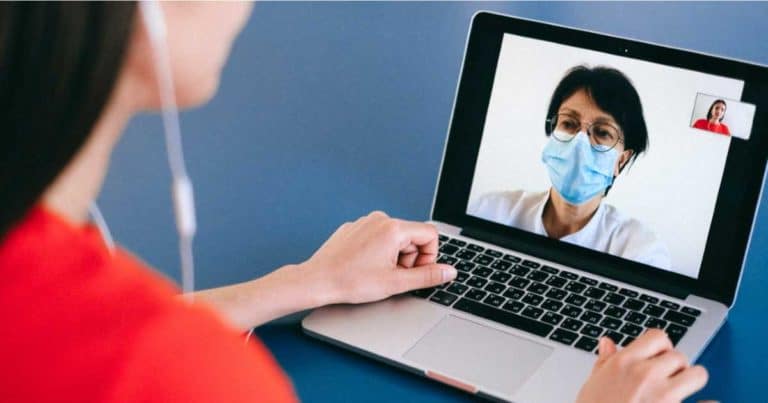With telehealth, one size won’t fit all
Mature health systems recognize the importance of context and design virtual care programs accordingly. Telehealth looks different for millennials and retirees, rural and urban patients and population groups with fundamentally different healthcare needs.

The pandemic has given us, among other things, a new buzzword: the “next normal.” As health systems adjusted to dramatic increases in virtual visits, they experienced a steep learning curve in a very short time. Some of this shift to virtual care will be permanent. A significant percentage of ambulatory care will never return to a clinic.
My firm’s work with health systems on their digital health and digital transformation programs suggests that while telehealth technologies have matured rapidly in the wake of the pandemic, the implementation of virtual care programs has been a struggle.
It’s not just caregivers and clinicians who have had to master the new modality for delivering care; healthcare consumers and their extended network of family and friends now have to adapt to telehealth as a new normal in accessing and receiving care.
The most mature health systems recognize the importance of context and design their telehealth programs accordingly. Telehealth looks different for millennials and retirees, rural and urban inner-city populations, and population groups with fundamentally different healthcare needs.
Many of us have gotten used to the idea that telehealth is just a new way to meet the doctor, only now it is through a video visit. But telehealth is much more. It encompasses various services and multiple modalities for delivering services involving multiple technology platforms and interfaces.
As telehealth matures, healthcare providers have realized that a universal or one-size-fits-all approach doesn’t work. Healthcare consumers can experience telehealth today as audio and video and through synchronous and asynchronous communications.
The modalities become relevant when we start understanding the differences among populations – who they are, where they live, and what kind of device and network access they have.
Who is my telehealth consumer?
The demographic profile of healthcare consumers is a significant factor in determining the telehealth program that will work best for them. As an example, elder care differs from pediatric care. In pediatric care, Children are receivers of care, but the experience may have to be designed primarily for their parents who engage with the healthcare provider.
The challenges with telehealth in elder care were the topic of a recent study by Harvard Business School. The study found that elders who have hearing or visual impairments may struggle to receive care through telehealth modalities and may need to be provided with devices and training to learn to participate effectively in a virtual visit with a doctor.
For individuals with behavioral health and chronic diseases, telehealth may fit well with their needs. For other types of care, such as cancer treatment, in-person visits may be more appropriate for effective treatment and care.
Where does my consumer live?
Many of us may think of the typical telehealth consumer as one who owns a high-end video-enabled smartphone and lives in neighborhoods with ubiquitous broadband access. The much-discussed “digital divide” should disabuse us of this notion.
The reality today is that many vulnerable sections of our society are low-income populations living in areas that lack bandwidth coverage, don’t have adequate data plans or sophisticated video-enabled devices.
The FCC’s COVID-19 telehealth program has awarded $ 200 million in grants explicitly focused on increasing access to care for lower-income populations in inner cities with subsidized and no-cost devices, improved internet access, and data plans.
Consider those who reside in rural areas. At Intermountain, a health system that serves a sizable rural population in Utah, telehealth programs were launched over a decade ago to extend specialty care in rural clinics. Today Intermountain is considered a benchmark for serving rural communities with telehealth.
Marc Probst, former CIO of Intermountain, attributes this not just to their technical prowess but also to developing the necessary playbooks and capabilities to get people to adopt telehealth. His comments underscore another reality about telehealth; it takes a long time to get the programs right and deliver care seamlessly. For most health systems, telehealth is work-in-progress at best.
What device and what network is the consumer (and the provider) on?
Healthcare providers don’t control the patient’s device or the network they are on when receiving care through a telehealth session. The ability to conduct an effective telehealth visit depends on the network – at the consumer’s end and the provider’s.
As Anshul Pande, VP and CTO of Stanford Children’s Health, puts it: “What happens when you go from twenty visits a week to thousands and thousands of visits happening a week? Can your network and your substructures scale up to it? Can the software vendors handle network drops? What happens when a patient moves from Wi-Fi to a 4G to a 3G?”
It all comes down to creating an optimal experience, which got a lot harder because of all the infrastructure variables.
As the workforce in healthcare enterprises has gone remote, so have clinicians. Conducting virtual meetings with patients may often thus become a question of where the doctor lives.
At Monument Health in South Dakota, CIO Stephanie Lahr points out, “When we talk about wanting to do telehealth visits from home, I remind people I have physicians and other caregivers who live between two slabs of granite here in the Black Hills.”
What she means is that the effectiveness of telehealth may be impacted by the doctor operating from a location with poor internet connectivity.
Despite the initial kinks, telehealth programs will eventually become like any other online service, and user experience will be the differentiator.
Consider companies such as Amazon that have started offering primary care services through telehealth programs to their employees. Amazon’s depth of experience in understanding and designing for consumer needs will likely make them a benchmark for telehealth programs across the board.
We have also seen the emergence of several digital-first healthcare providers targeting specific niches such as elder care and behavioral health. These companies will focus on differentiating through superior online experiences and possibly lower-cost services as well.
The continued flood of VC money and the rash of digital health IPOs this year only validates the traction that digital-first healthcare providers are steadily gaining in the marketplace. Insurance companies will follow.
Kaiser Permanente already has an insurance product that offers only virtual care services. The product may suit young and healthy individuals with minimal care needs and those looking for cheaper insurance options.
Not everyone will come out a winner in this new normal; the shift to virtual care will be no different from any other sector that experiences a paradigm shift in a free market for goods and services.
Traditional healthcare providers facing aggressive competition from new and non-traditional entrants in the healthcare market will need to adjust accordingly. They will need to overcome their reliance on fee-for-service models.
They will need to overcome their reservations about cannibalizing in-person care and figure out pathways to profits from low-paying virtual care models. We may be in the early stages of the long-awaited disruption in healthcare – one that has been brought about by the pandemic, albeit in an unexpected way.














